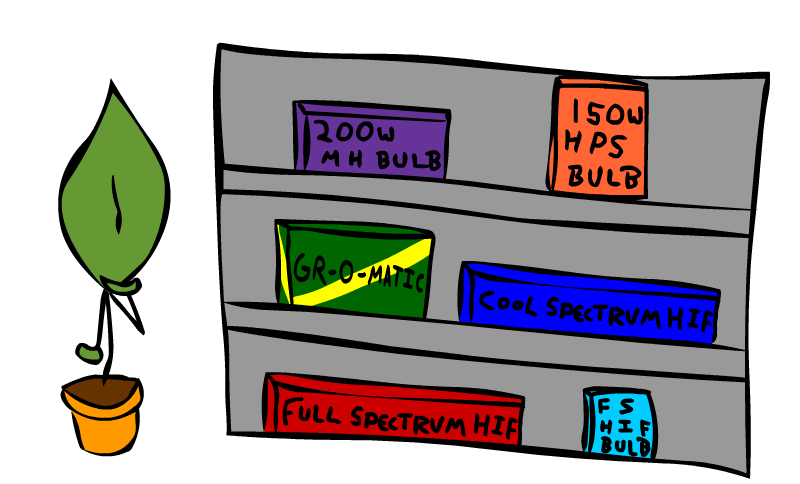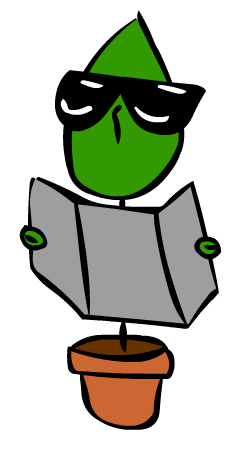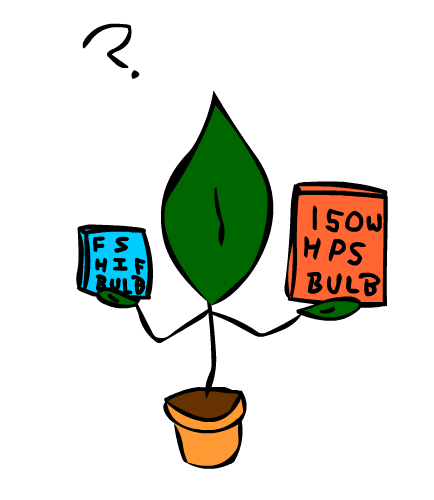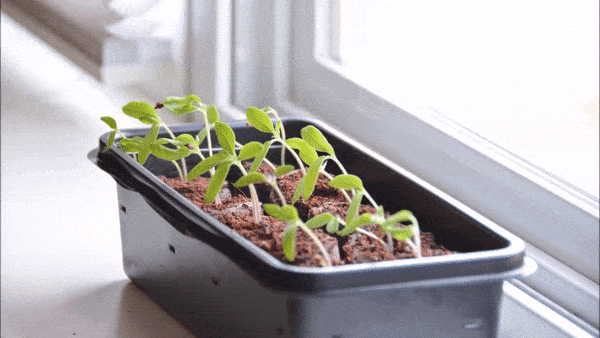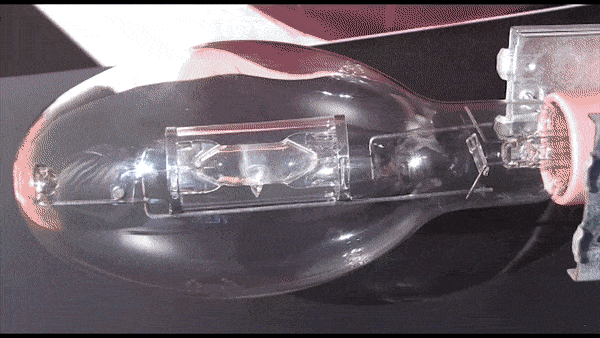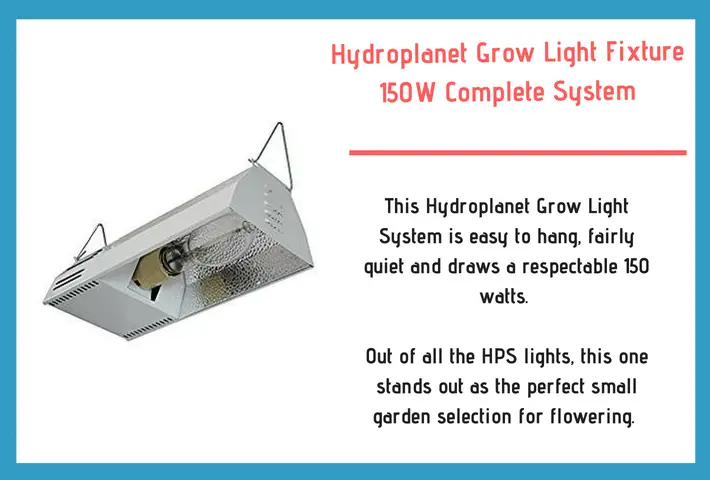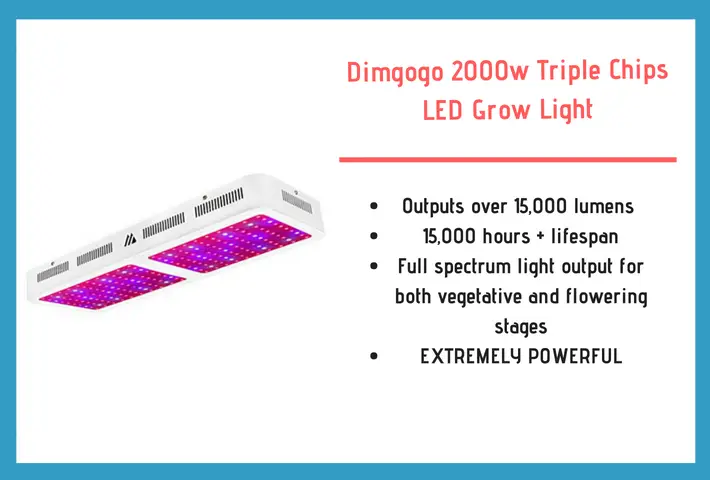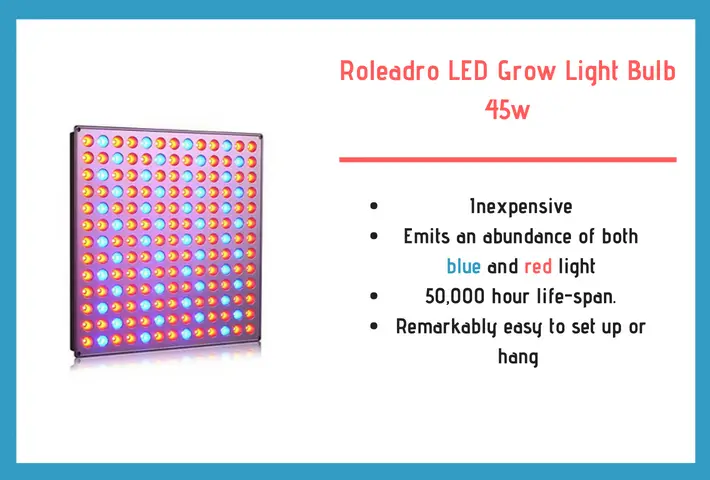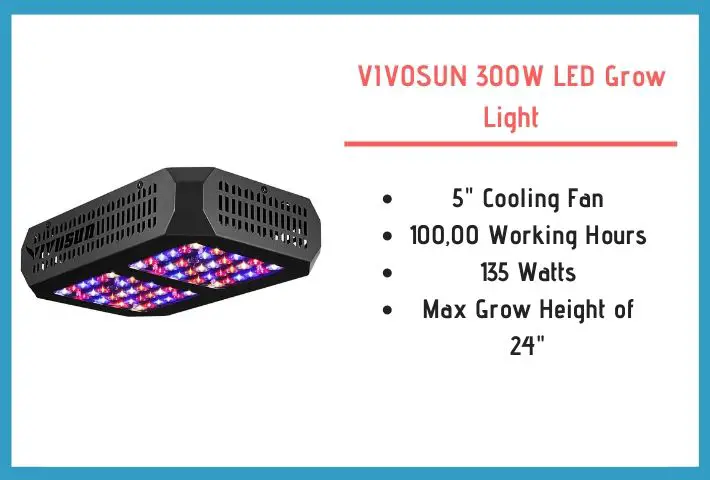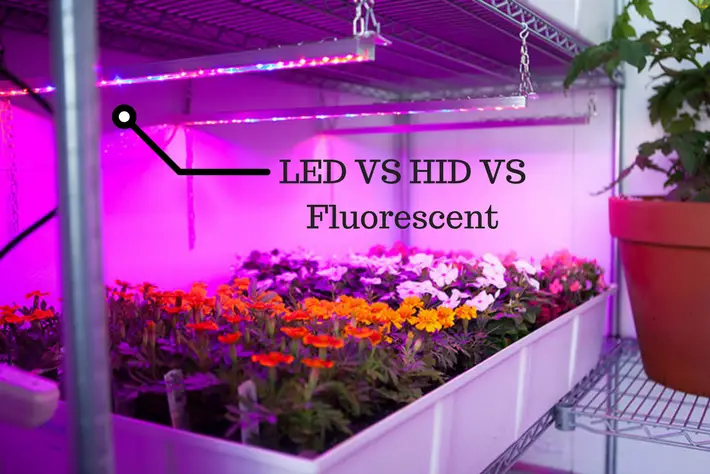
For thousands of years, the growth of vegetation had to happen outdoors. Your options were: plant outside, in the dirt, on your knees, while the sun roasts you to a crisp, or die of starvation. Your choice.
Since then, things have changed. Thanks to the advancement of grow lights, we now have the ability to adequately grow basically any plant indoors. In fact, it’s now quite a bit easier to grow indoors; we have complete environmental control of our gardening area.
This advancement is not just a matter of power and energy use, modern grow-lights output the correct color spectrum necessary to quickly grow at an affordable price point.
Best LED Grow Lights for Herbs: At a Glance
| Grow Light | Design | Life-Span | Light Output |
|---|---|---|---|
| Dimgogo 2000w LED Grow Light | 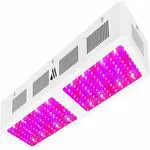 | 15,000 + Hours | 15,000 Lumens |
| Roleadro LED Grow Light | 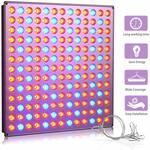 | 50,000 Hours | 5,000 Lumens |
| VIVOSUN 300W LED Grow Light | 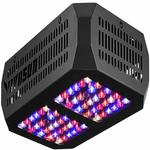 | 100,000 Hours | 22,000 Lumens |
With that being said, some units are clearly better than others and selecting the wrong one could leave your yields either heat burnt or dwarfed.
After testing dozens of bulbs, researching for hundreds of hours, and talking to multiple specialists, we’ve selected the best grow lights for herbs and vegetables.
As always, if you have any additional questions, we can be reached @herbexaminer on Twitter.
CONTENTS:
What to Look for in a Grow Light?
Before picking out a unit, you need to know these three crucial aspects of what makes a good grow light:
- The Light Spectrum Output
- The Light Intensity Output
- The Price Range
(Ok, well two are crucial and one is arbitrary but you get the point!)
Light Spectrum Output:
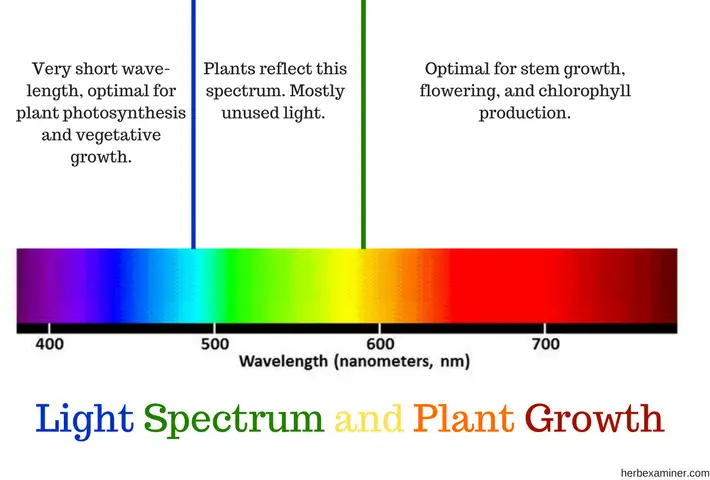
The light spectrum output matters
As the graphic above shows, plants use the blue and red spectrum for development, while mostly reflecting green (which is why most plants appear green).
- Blue light causes vegetation and red light causes flowering.
- This spectral range – roughly 400 – 700 nanometers in visible wavelength – is called the PAR (photosynthetically active radiation) zone; it was developed by botanists to better understand the plant-light relationship.
- Plant foliage will actually move towards light within the blue spectrum, this is called positive tropism.
For optimal indoor growing, you should utilize grow bulbs that emit mostly blue and red light and you need to carefully monitor the light energy output of your bulbs in order to get the best yields possible.
NOTE: Buying two separate grow light units (one that emits red light and one that emits blue light) can really run up a hefty price. It’s for this reason that specialized LED light systems are becoming popular. More on this later.
Light Intensity Output:
- Light Intensity is the magnitude of light energy per unit.
- Lumens is a measurement of how bright a bulb is. Remember, watts measure energy use, not brightness (this is often a point of confusion).
- The formula for Light Intensity:
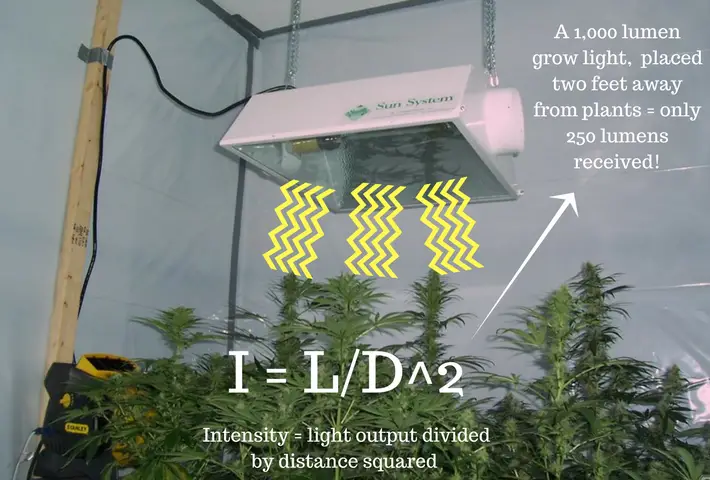
- An HID grow light that emits 120,000 Lumens, placed four feet away from a plant, will only output 7,500 lumens to that plant. This is important to remember, light intensity radically diminishes with distance.
- Factors that affect light intensity are: the power of the light source, the distance from the source, and the intervening medium.
- The general rule of thumb is to hang 1,000 & 600-watt bulbs 24 – 36 inches above your plants. Bulbs that range around 400 watts should be placed roughly 18 – 24 inches above.
Summary:
Combining our knowledge of light intensity and the light spectrum, we should consider bulbs that output light in the blue and red color spectrums, with intensities that match our planting ambitions. Smaller gardens = less light intense bulbs.
Grow-light Price Ranges:
The most expensive bulbs can cost up to $300, while ‘starter’ bulbs range from $20 – $50.
How Much Light Does Your Plant Need?
In short, it really depends!
- Photoperiodism is one of the most important aspects of plant flowering. You can think of it as the amount of light and the amount of darkness that a plant necessitates. Contrary to popular belief, darkness is more important than light when it comes to flowering.
- Any plant that requires less than 12 hours of light to bloom is called a short-day plant. This includes salvia, green onions, and soybeans among many.
- Any plant that requires more than 12 hours of light to bloom is called a long-day plant. This includes plants like spinach, lettuce, and petunias.
For optimal light distribution, many gardeners use light rails, which can either mimic the sun by moving in a circular motion or slowly glide back and forth.

What are the Different Types of Grow Lights?
There are three different categories of grow lights that you need to know about:
- Fluorescent Grow Lights
- HID Grow Lights
- LED Grow Lights
Fluorescent Grow Lights:
Fluorescent bulbs have been the industrial gardening standard for many years now. They’re generally reliable, fairly efficient, and not too expensive.
Fluorescents work by ionizing mercury vapor inside a glass tube. This creates visible light.
You can buy fluorescent bulbs in the shape of either the twisty looking CFL:
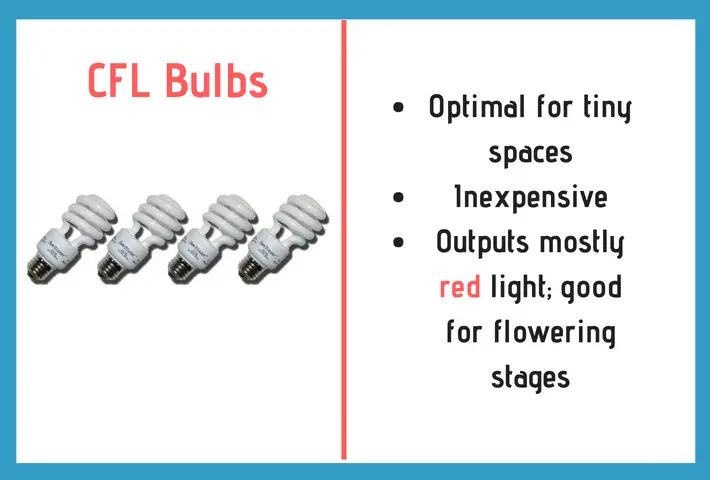
Or the larger T5 bulbs:
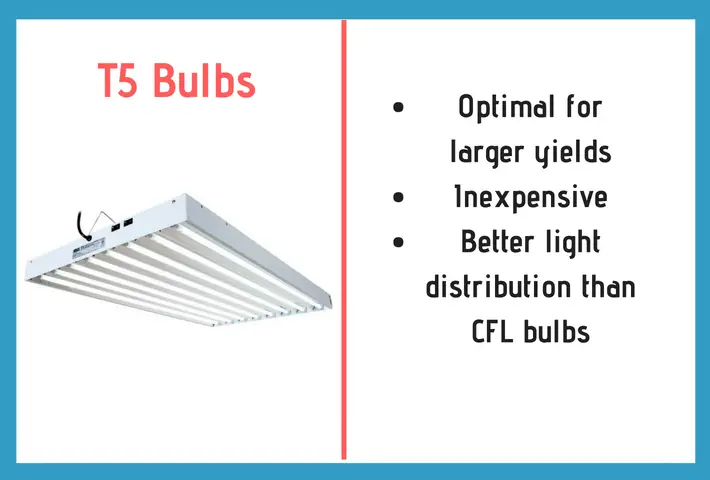
The Benefits of Fluorescent Grow-Lights:
- Low heat emissions, allowing growers to position their yields within relatively close proximity to the grow light.
- Very inexpensive.
- Simple to use and set-up.
- Great for medium-sized grow operations.
The Downsides of Fluorescent Grow-Lights:
- Less efficient than LED or HPS lights; studies have shown that fluorescent lights have a much lower yield per watt ratio.
- T5’s are not very effective for flowering.
The Best Fluorescent Grow-Light Overall:
If you’re a beginner with a small garden, I recommend starting out with 23-watt CFL bulbs that emit at least 1,500 lumens.
These bulbs are really great for small spaces along with being extremely energy efficient. Hang a few roughly 2 – 3 feet above your seedlings and watch the magic happen!
If your yields are larger, consider T5 bulbs with a reflective hood.
Reflective hoods increase the light emitted within a growing area and also make for an easy to set-up structure to place your bulbs in.
HID Grow Lights:
HID (High-intensity discharge lights) are designed to be long-lasting and dependable. They function in a more specialized manner compared to fluorescent lights. Instead of ionizing mercury, HID’s work by igniting gas inside of the bulb.
There are two different types of HID grow lights:
High-Pressure Sodium (HPS) Bulbs:
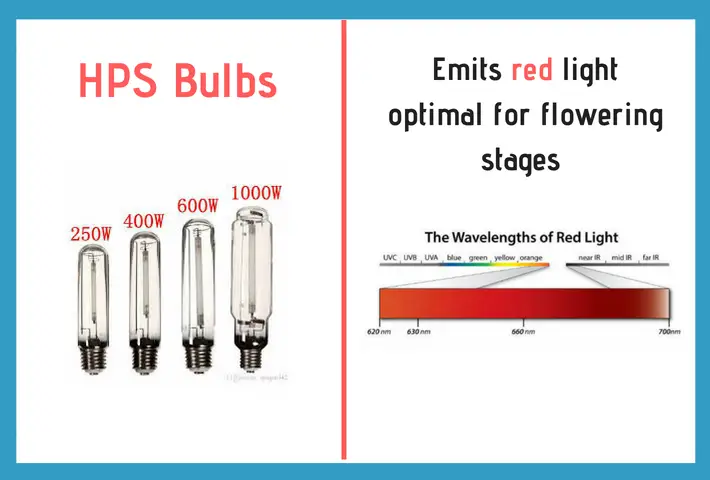
And Metal Halide (MH) Bulbs:
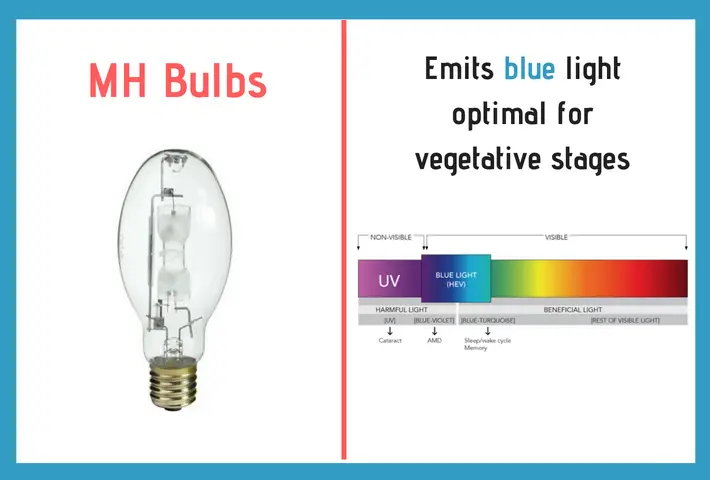
Choose accordingly.
NOTE: HID grow lights need a reflective hood, ballast, and of course the bulb to function correctly. Don’t make the mistake of only buying the bulbs!
The Benefits of HID Grow Lights:
- HPS-HID lights are the best flowering grow lights on the market.
- HID grow lights produce an abundance of usable light.
The Downsides of HID Grow Lights:
- HID’s produce an INSANE amount of heat! Inexperienced growers might end up burning their plants if not careful.
- Relatively short lifespan; HID lights need to be changed regularly.
- Due to excessive heat output, most growers end up having to buy exhaust fans.
- Not suitable for small spaces.
The Best HID Grow-Lights Overall:
If you’re wanting an HID grow-light for flowering, I’d start with the:
For vegetation setups, try the:
LED Grow Lights:
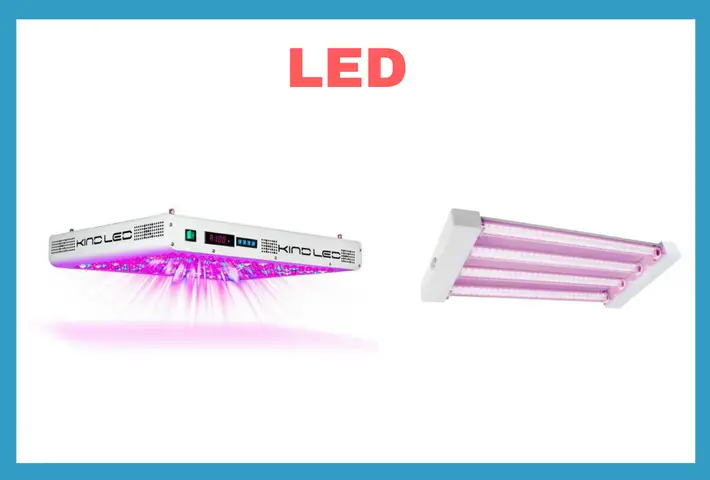
LED’s are a fairly new option within the gardening scene, and like any new and innovative product, the price is pretty darn high.
The Benefits of LED Grow Lights:
- LED’s run at a MUCH lower temperature than other grow lights. This lowers your chance of scorching your plants.
- LED’s are the easiest grow lights to use and set up.
- LED’s are the most energy-efficient grow light option, producing more light per watt than fluorescents or HID’s.
The Downsides of LED Grow Lights:
- More expensive than other options.
- Some LED units don’t output enough light! Build-quality and design vary greatly by brand.
TIP: When shopping for LED grow lights, you’ll run across the phrase ‘full-spectrum’ constantly. This simply means that the LED product emits some level of both white and green light.
The Best LED Grow-Lights Overall:
If you’re wanting a long-lasting, ultra-powerful entry into LED’s, consider the Dimgogo 2000w Triple Chips LED Grow Light Full Spectrum Grow Lamp:
For less than $30, the 45W Roleadro LED Grow Light is probably your best bet:
For $30 more you can upgrade to the 300W Vivosun LED Grow Light:
When shopping for an LED unit, always check for the estimated life-span and lumens emitted.
That rounds out our favorite selections.
If you’re curious about how to grow an indoor herb garden, check out our article here.
If you have any additional questions, please feel free to @herbexaminer on twitter.
Thanks for reading!

